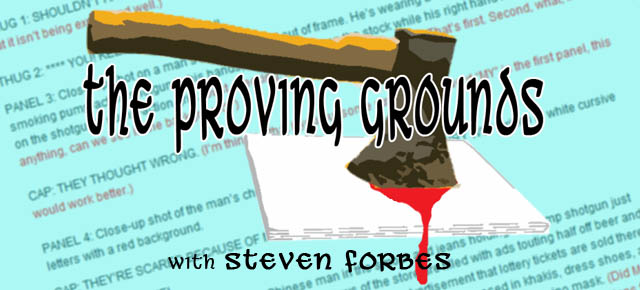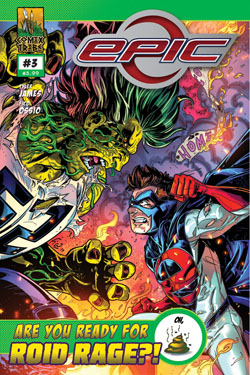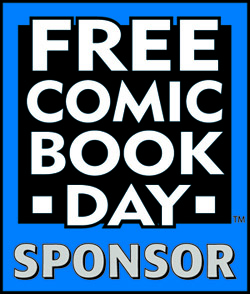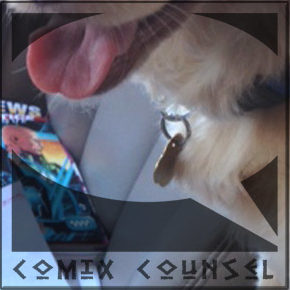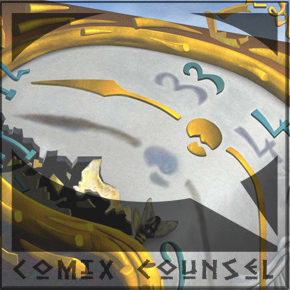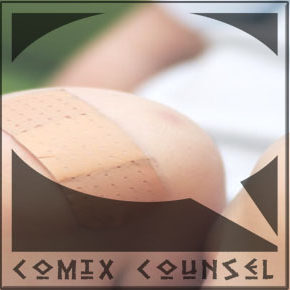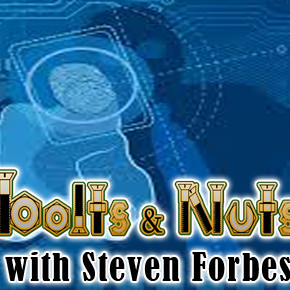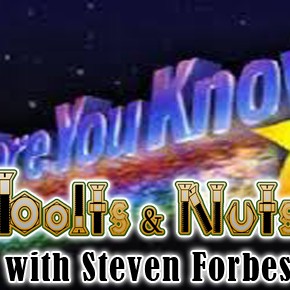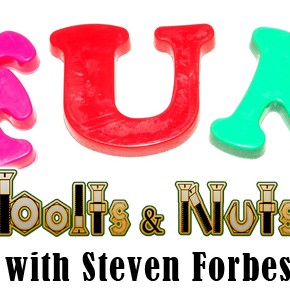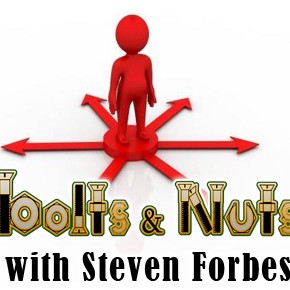TPG Week 113: Elderberries At 100 Paces
Welcome back, one and all, to another installment of The Proving Grounds! This week, we have a new Brave One in Michael Arlain, who hales from Ringbottom, MN. (I happen to love Minnesota. It’s the land of Prince. And is Michael really from Ringbottom? Nope. Don’t even know if he’s from MN. Sounds good, though.) As always, we have Steve Colle in blue, I’m in red, and let’s see how Michael weaves a tale of
Fanboys
PAGE ONE (three panels)
Panel 1. Large Panel of NYC just after dusk. It is winter, with a fresh foot of snow blanketing the cityscape. (What distinguishes this as being New York? Use a visual cue such as a shot from a distance of the Statue of Liberty or other closer landmark to ensure the artist has a specific direction. Otherwise you may get a cityscape with no distinctive landmarks whatsoever. Also, how do you show a fresh foot of snow on a cityscape? It’s too big a shot for this specificity.) (I agree, but only in part. Since the towers fell, the skyline has to be a bit more in your face in order to recognize it. NY can easily be shown in two distinct ways: you pull out to show the skyline, or you push in and show a horde of cabs. Pull out to show serenity, push in to show bustle. As for the snow…is it still snowing, or has it finished snowing? This will be part of the freshness of the snow. Unlike a lot of places, NY is not a place where snow will paralyze it. It’ll take more than a foot, I can tell you that.)
CAPTION (Jasper):
This is the Big Apple.
CAPTION (Jasper):
The City of Dreams.
CAPTION (Jasper):
The most dynamic city in the world.
(I’m getting a sense of overkill in the caption department here. Not due to quantity, but rather the repetitiousness of the same message. The other thing is that things like the City of Dreams is someone else’s quote being quoted, so you have a quote within a caption using quotation marks for the character’s speech. How do you deal with this? By writing it as ‘The City of Dreams’ with an apostrophe at the beginning and end of the quotation. Steven, if I’m wrong, correct me, but I believe this is how it’s done instead of having quotation marks inside of quotation marks in the comic medium.) (You’re not wrong. And it isn’t an apostrophe, it’s a single quotation mark. But that isn’t the real question. The real question is this: are these voice-over captions? If they are, then you’re fine. If they aren’t, and it doesn’t sound like they are, then you’re wrong.)
Panel 2. Wide panel. Jasper walks down a sidewalk with Charlie, laughing and talking. Jasper is carrying plastic shopping bags and Charlie has a cigarette. Jasper’s breath is visible as steam. Both are dressed to avoid the cold, complete with hoodies and gloves. (Are their backs to us or are they walking towards us or are they walking from one side of the panel to the other? Give us more direction.)
CAPTION (Jasper):
It’s a vibrant city; (Never use a semi-colon in a dialogue in this medium. Besides, it should have been a comma.) different every day, and yet
Panel 3. Wide panel. Overhead of a Native-American woman running down an alley, pursued by a man in a ski mask. (Artist’s Note: RE. Mechelle Longshot Pontiac) (So what I’m getting is that you’ve jumped from a single shot of the pair walking down the sidewalk to a sudden shot with no correlation of a woman running down an alley. Why not have the pair seeing a woman running down the alleyway in this panel instead so you have a flow and connection between the events?)
CAPTION (Jasper):
(Ellipsis marks here to connect with previous caption.) It somehow never changes.
I’m not liking this page. Sure, you have an establishing shot from a distance of the location of the story, but you weren’t specific enough in your visual description and you followed up with two unrelated events instead of building not only a connection between the two, but a relationship between the reader and the pair walking and talking. First, the setting. New York City is a BIG place and is a very general location for the story to be taking place in. Why not go a lot closer to the action and say Brooklyn or Greenwich Village or wherever to get straight to the scene. You also have no one else on the street other than the four characters you’re writing about. How likely is it that in New York City, there is no one else outside, especially at dusk? Next, your text. You could have had dialogue being spoken between Jasper and Charlie, letting us in on their conversation. Here’s how I would have approached the use of captions on this page: Panel 1 has the omniscient narrator saying The Big Apple or New York City or Brooklyn (even adding the words Winter in to help establish the season), then go to a start of the verbal exchange between Jasper and Charlie in a voice over caption, whether it’s a story or joke or whatever being told that gets a laugh response in the second panel. Add another panel (or two) to help build a rapport with the reader. Properly introduce your characters before jumping into the upcoming situation. Then show the characters witnessing the woman running past them or towards them in a panic, being followed by the attacker. Another thing that bugs me is the stereotype of the alleyway. Do all attacks occur in an alleyway? Do they all get hidden away from public view? If the guy has a ski mask, then he’s not afraid of being seen and identified. The unfortunate truth is that most passersby will walk right past this kind of situation. Will yours? That’s where having the upcoming What the (bleep)?! comes in, bringing it to this last panel which establishes a reaction coming from your protagonists, leading to what they might do on the next page. Not a good start so far, Michael.
Well, I’m much easier to impress… Wait. Okay, sorry. I laughed. Let’s try this again, with a straighter face this time.
a-HEM!
I’m much easier to impress. (And this time, I held it.)
Okay, let’s take it top to bottom and see how it goes. The very first thing to notice is that Michael put a panel count on top where he put his page number. This is never wrong to do. (Well, never is a strong word. Some editors may not like it, because it’ll them force them to count to make sure you’ve matched the number of panels with the count at the top. So it will depend on whether or not the editor says it is wrong. However, unless it is a company standard, most editors are flexible enough to not ding you for it. I know I won’t.) You can put all kinds of information on this line. Just make sure it is relevant to the entire page. Some writers like to put their layout notes on this line, others like to put a general feeling of what they’re going for, and still others will put other things here. Maybe a lettering note. It doesn’t matter, just as long as it is for the entire page.
The panel descriptions could use a little work, but the bigger problems are the pacing and the dialogue. Let’s talk about the second before getting to the first.
Taking a closer look at the dialogue, we can see from a scripting point of view that these are not voice-over captions. How can we tell? Because in panel 2, we have Jasper and Charlie in-panel, but we also have Jasper talking in the caption. Showing Jasper in the panel significantly lowers the possibility of these being voice-over captions. It doesn’t nullify it, but it significantly lowers the possibility.
Again, if these aren’t voice-over captions, then the quotation marks are wrong.
Now, if these aren’t voice-over captions, there’s still the problem that no one is really speaking in panel. This can really be seen in panel 2, where there’s a prime opportunity and it isn’t taken. So, as of now, both characters are as yet unnamed, and you have a perfect opportunity to work in at least one name in this panel.
As for the final panel… NYC is riddled with alleys. That doesn’t bother me. What bothers me is that this is the first page, there are only three panels on it, and there isn’t enough done to start telling the story. I don’t mind the cuts, but this page easily could have fit double the amount of panels and we could have gotten more story. This means your pacing is off.
PAGE TWO (five panels)
Panel 1. Wide-panel, overhead. The woman can be seen wrestling with the man as Charlie and Jasper stand at the entrance of the alley, having just noticed the skirmish. (Why another Wide panel, overhead shot? You just had one as a close to your last page. Not only that, but the reader is being kept at an omniscient viewpoint above the action instead of witnessing the attack from an eye level, preventing instead of creating an emotional response from the people watching it unfold: Us. Get the reader involved and caring what happens to this woman. Also, why is this a silent panel? She’d be screaming, the attacker would be telling her to shut up, there would be sounds ringing through the alley like trash cans being knocked over, and finally, your characters at the entrance would be screaming out.)
Panel 2. Jasper shouts, dropping the bags as he raises his arms in anger. Charlie searches his pockets in the meantime. (A- Wouldn’t this action be taking place in the previous panel?; B- Would Jasper just drop the bags and stand there, his arms up in anger [or rather, in protest, as that’s what it sounds like he’s doing]; and C- Would this honestly be a real reaction?)
JASPER:
Yo, (Exclamation mark instead of comma here.) What the fuck?!
Panel 3. Jasper starts forward while Charlie finds his cell phone. (You’re dragging out actions into three panels that could have been conveyed in one. Jasper drops the bags as he starts forward upon seeing the woman being attacked. Simple as that. Instead, you have him standing, then dropping the bags with his arms raised, then forward motion. That doesn’t make sense. Perhaps if these were animation cells, it would take three images, but not in sequential art. Get to the point.)
Panel 4. Jasper turns back when Charlie grasps his arm, holding the phone up, dialing.
CHARLIE:
Dude, hold on a sec– (Have this as a broken word of sec– as opposed to sec as slang.) Operator? I need the —(First, if the phone is dialing, Charlie wouldn’t be talking to an operator. You’d hear the phone dialing. Second, would a determined Jasper seriously wait for that extended period of time, waiting for the connection to the operator, before pulling away? I don’t think so. Finally, wouldn’t Jasper have a verbal reaction to being held back?)
Panel 5. Jasper turns away, pulling his arm free as he runs towards the two in the alley. (This is weak. You don’t describe the force of his pulling away or his facial expression or anything that would make this a powerful image.)
CHARLIE:
–Hey!
JASPER:
Asshole! Over here!
CHARLIE:
Jasper! Wait, God dammit!
Another page down and the story isn’t getting any better. You have five panels here that could have been put into one. I mentioned earlier that the first three could have been condensed, but now you’ve introduced an action that slows down the pace of the story even further: The phone call and grasping (dainty vs. grabbing, forceful) of Jasper’s arm. Cut to the chase, Michael. Jasper steps forward as he drops the bags upon seeing the attack and Charlie screams out Jasper! Wait! Let’s see what’s in store on the next page.
We’ve got a second page on the books, and it absolutely REEKS of elderberries! Nothing more than padding here, and it’s killing me.
There are two things going on here, and we’re going to talk about the most egregious of them very soon. First, though, the padding.
You’ve got five panels here, but the action is mixed up as well as being dragged out.
Bag drop, start forward, then grab? I’m not seeing it. Start forward, bag drop with a grab. That makes more sense to me. But just because it makes more sense doesn’t mean that you need three panels in order to do it. All of that is really one panel. Jasper starts forward, but Charlie holds him back with one hand as he dials with the other, and the bag is in mid-drop. One panel. That takes it from five to three right there.
Now, there’s some problems here with the camera work. Because you have panel 1 as a high angle shot, and you describe the mugging first, that has to be on the left. This means the guys and the alley entrance have to be on the right. Why is this a problem? It isn’t, on this page. However, it could be a problem on the previous page, depending on where the artist puts the camera in panel 3.
Would I go low and get right into the action of the mugging? Probably not. I like this choice of angle, because while the mugging is important, it’s not as important as placing the guys. You won’t get to see much of the mugging if you go with a lower angled shot, because the guys still have to be placed.
The most egregious thing, though, is the dropsies. You had captions, and then just totally dropped them on this page. Either you ran out of things to say, or they weren’t that important to begin with. Which is it?
PAGE THREE (six panels)
Panel 1. The mugger punches the woman, knocking her down and turning on Jasper as he approaches. (This is two actions: 1- The mugger punches the woman and 2- he turns towards Jasper. You can’t convey this action in one panel. And again, why a silent panel?)
Panel 2. The mugger draws a pistol, concealed below the small of his back, secured only by his belt and jeans. (OOOOOOO-kaaaaay here’s another stereotype: Why introduce a gun to the mix? Does every mugger have a gun? If he had a gun, why didn’t he have it out already, threatening the woman instead of beating her? This brings to mind another question. Why is the mugger attacking her to begin with? Is it her boyfriend or husband or hired muscle trying to make a point or example out of her? We don’t know if she has a purse to be snatched [never mentioned], an expensive fur coat to be torn off of her [never mentioned], or what the situation is. It isn’t clear. This makes it just another stereotypical situation. I honestly hate stereotypes. Back to the point that started this: The gun is completely needless to this story. It isn’t making things any more dangerous for our aspiring hero as he easily slides under it in the next panel, making this panel another filler which can be taken out.)
Panel 3. Jasper slides in the snow and ice like a batter at home base, (This analogy makes no sense, as the batter at home base hasn’t hit the ball yet to make him a runner, making it sound like the batter is unable to keep his footing. What you’re trying to say, I believe, is that Jasper slides like a baseball player running and sliding into home plate. THAT makes sense.) under the shot while Charlie ducks away from the alley. (Why is Charlie even in this panel?)
SFX:
BANG! (Get rid of this as the gun shouldn’t even exist.)
CHARLIE:
Holy shit! (Get rid of Charlie’s reaction here as he shouldn’t even be in the shot.)
Panel 4. Sliding past the mugger entirely, Jasper grabs his arm and jacket as he passes, prompting more wild shots. (This sentence reads really poorly. You’re saying that he’s already slid past the mugger entirely, but then mention that Hey, by the way , he grabbed his arm and jacket as he had passed. Rephrase it to read Jasper grabs the mugger’s arm and jacket as he slides by [or under] him. )
SFX:
BANG! BANG! (Again, get rid of the whole gun issue.)
Panel 5. Jasper’s arms enlongate (Elongate) as his momentum carries him a bit further past the mugger. (Elongate is another word for stretch, which can be interpreted in this panel as he simply stretched out his arms. What you’re trying to say, however, is that he has the ability to stretch his body out like Mr. Fantastic, Plastic Man, or Elongated Man. That’s not the message you’re giving. It’s only in the next panel that you mention elasticity, which again could be heightened flexibility. Lay it out for us clearly that he has super-powers of elasticity.)
Panel 6. Using his momentum and elasticity, Jasper slingshots the man into the alley wall. (Is Jasper braced in any way when he slingshots the man? He couldn’t do it if he weren’t braced first, which means you forgot to mention something.)
SFX:
Thud!
Artist Note: Jasper makes a 360 degree turn throughout the maneuver starting in Panel 3 through Panel 6. (I’d love to know why he did a 360 ° turn. What pertinence does this have to the story? A straight line would make a lot more sense.)
This page was a jumbled mess of descriptions. You need to be fully aware of how you’re writing things. Pass the script by others to get their thoughts on clarity. Now, with that said, this now-five panel sequence could have been moved to Page Two. That’s a lot of panels to be moved, literally the whole page, so it just goes to show how pacing can really effect your story.
P3. My brain now officially hurts.
Here’s the thing about fight scenes: if you don’t know how to fight, or if you can’t imagine them properly, they can go very bad, very fast.
This so-called fight went to Hell in a handbasket at panel 1 of this page.
We’ve got moving actions, we’ve got actions that aren’t explained properly, we have actions that make no sense, and we have a fight that just is taking way too long.
What makes more sense? Having Jasper throw his punch from the mouth of the alley…unless he can’t stretch that far. But, really, this is just plainly bad.
What’s a good way to describe a fight? Using toys. All those action figures you have on your shelf? The ones that aren’t doing anything besides collecting dust? Get them down, remove the few spider webs, and start to play with them! You don’t have to build a set, but you have to act out the fight. Truly, what you have here isn’t working.
Steve is extremely right about the gun. It comes out of nowhere in order to add an element of danger, but really only succeeds in insulting the intelligence of the reader. Neither is a very good thing. If you’re going to mug someone, you’re going to overwhelm them with fear so that they’re compliant. You do that with the gun. If you bring the gun out later, as you do here, it looks as contrived as it sounds.
Really, this is reading like a movie in the 80s. I love 80s movies. However, that was thirty years ago. Even if you were doing a pastiche, you’d have to inject a level of satire into it, and there’s none to be found here.
Get the toys down, play with them, and act this out.
PAGE FOUR (five panels)
Panel 1. The man slumps to the ground, unmoving. His gun falls to the ground near him.
SFX:
Shhhhh (What is this sound effect to? What’s making this sound?)
Panel 2. Jasper rises from his crouch, eyes on the downed mugger. (You can have this action take place at the same time as the slumping of the mugger by having a shot from either behind Jasper looking towards the mugger in the background [preferred] or from behind the mugger in the foreground with the camera aimed towards Jasper in the background. In other words, one panel.)
Panel 3. Turning, he looks at the woman who is sweeping up the spilled contents of his (her) purse. (And there’s the purse that wasn’t previously mentioned.)(It’s magically delicious!)One of her eyes is already blackened. (Meh. It takes a while for a bruise to form. This might be all of 30 seconds. Maybe. Enough time? I don’t think so. However, it also illustrates the fact that she was punched in the face, so I’ll let this go.)
Panel 4. Moving carefully towards her, Jasper speaks, looking concerned. (This can be combined with the above action to make another single panel.)
JASPER:
Are you okay?
Panel 5. Charlie approaches behind Jasper, who turns halfway towards him. (And this can also be combined with the above single image by having Charlie’s voice coming from off panel.)
CHARLIE:
Bro, we gotta go.
We come to the end of another page and have another five panels that can be made into two. Condensing is important in getting the pacing of the story right, which is something that you’ll learn as you move forward in your writing.
P4 and there isn’t much more to say than what Steve already has.
Pacing is crucial. It’s the difference between enjoying a book and feeling like you’re being tortured. We have four pages here, and really, there’s no more than three—and that’s if I give the fight scene an entire page, which I probably wouldn’t do.
Really, in order to do this justice and give the fight the page it deserves, you up the ante. Not by having a gun, but by adding another attacker. Two muggers is better than one, and then you’d have to deal with them both. This gives you more playtime!
As for the magically delicious purse, you have to go back and add it to P1. Otherwise, it just shows up. Then your artist will be accused of pulling a Liefeld with appearing/disappearing weapons, and it would be your fault. While most artists would love to have Liefeld’s following, they’d hate to get his criticisms. You can help with that.
When it comes to interest…I have none. What do we have here? Another page of dropsies—well, it’s P4, so captions have been abandoned for three pages, if not more. A guy stopping a mugging? That’s not interesting, because there’s no dialogue to make it so. Take a regular Spider-Man book. Any title. I don’t care. Remove all the dialogue. Now how interesting is it? Not very, right? Same thing, here.
Right now, there’s no story. You have actions, but no story. You need to have one. The art is supposed to tell the story, but so far, there’s nothing for the action to cleave to. Dialogue would help, but there isn’t enough of it here to even begin to tell a story, let alone carry the art. That’s something for you to work on.
PAGE FIVE (six panels)
Panel 1. Jasper turns back towards the woman.
JASPER:
Just a sec. (Who is Jasper saying Just a sec to? It sounds as if he’s saying it to the woman, but he could be talking with his back to his friend. This isn’t clear. By having his pointer finger up and aimed at the appropriate party, it clears up the confusion.) (The problem is that it comes on an opposing page, when it should have been combined with the previous panel.)
Panel 2. Charlie pursues him, a plaintive and frightened look on his face. (This, again, can be combined with the action from the above panel. By having the woman in the extreme foreground, Jasper in the middle ground, and Charlie in the background, we can get that finger pointing at the right person and get a full body shot of Charlie’s reaction to waiting.)
CHARLIE:
Now, Man!
Panel 3. Charlie gestures frantically when Jasper stops again. He has clearly lost his cool. (And again, this frantic gesturing is what you’d show in the previous panel combination, so this image doesn’t need to exist. Besides, why was Jasper stopping again [and again, and again ]?) (And the way this is described it’s a moving action. Can it be drawn? Yes. But I want you to think in static images.)
CHARLIE:
I’m holding! That guy looks dead! The police are coming and (Who called the police?) You just blew your wicked shit all over the place! I want to go NOW! (This speech can be brought up to the new first panel.)
Panel 4. Jasper looks back towards the woman (He stops again?) while they both raise their hoods and lower their hats. (This is a moving panel. Pick an action that they can complete, and won’t make the artist look choppy.)
Panel 5. The two turn to leave and pause (They stopped again??) at the voice behind them. (Combine this panel with the one above to make it so that both men are turning as they raise their hoods.) (More moving panels…)
WOMAN (Off weak):
Thank you. (Move this to the next panel so we hear the voice after the men have left the scene.)
Panel 6. Charlie and Jasper disappear around the corner, fleeing the alley.
SFX (distant):
Woooo
CAPTION (Charlie):
C’mon bro.
So on this page, panels 1-2-3 can be combined into one, 4-5 can be put into another one, and 6 stands on it’s own. You can add these to the two panels from your previous page to make a page of five panels. Altogether, we’ve eliminated two complete pages. That’s a lot of fluff.
I’m stopping here after the first scene. I read ahead and noticed more of the same type of needless fillers in the next scene. The point is made. I’ll let Steven have his say.
I think we all know what I’m going to say. This is crap. So let’s run it down.
Format: Flawless Victory!
Panel Descriptions: Crap. You have two things going against you here, Mike. The first is that abysmal fight, and the second are all the moving panels. The last page is full of ’em.
Fight choreography is something that you can either gloss over, leaving it to your artist, or you can do it yourself. If you leave it to the artist, then you’re going to be stuck in trying to make sense of what they’ve done. If you’re in good rapport with the artist, then that’s no problem. If you aren’t, then you could be stuck in a no-so-friendly place.
The moving panels, while bad, are also understandable. It is a challenge to think in static images. We’re all used to novels, television, movies, and commercials. Moving action. Learning to think in and thus write in still images is a learned trait. But if you want to be successful at this, then it is something you’re going to have to put your mind to. There’s no other way, unless you don’t want continued success. If that’s the case, keep doing what you’re doing.
Here’s a tip on how to stop making things magically delicious: as soon as you add a new element, something that should have been seen or mentioned previously, go back to the first time that the object could have conceivably been seen, and add it there. The purse didn’t show up until P3 or so, and it should have been on P1.
If you keep that philosophy and follow through on it diligently, you should be good to go.
Pacing: All kinds of terrible. I could smell the elderberries as soon as I opened the file…and that’s pretty deep.
Most of this is nothing but filler. Four pages, and with the way it’s written, you really only have maybe six viable panels. Know what? I’ll go ten. And that’s stretching it. Fluff.
And the absolutely sad part about it is that nothing of merit happens. You may think so, but unless either the woman or the mugger show up later in the story, this interlude can be cut, with no one the wiser.
Pacing is extremely important. I think I can see what happened: you tried to make a page count, and the padding is a result of that. It doesn’t seem like you have enough story to carry the pages. This means you need to go back and re-plot, possibly with the help of an editor who knows the story and what you’re tying to do, so they can help you get there.
This…there is no redeeming quality to the pacing here.
Dialogue: The dialogue here is the opposite of good.
First, there isn’t enough of it. Second, what is there needs to make a larger impact on the reader. Third, none of it draws you into the story. I literally finished P5 and thought about going back to P1 to see if I had missed anything. Then after deciding I hadn’t, I found that I wasn’t intrigued enough to continue. Actually, I wasn’t intrigued at all. That’s never a good reaction.
Content: As a reader, I don’t care. It’s just another badly written comic on a pile of other badly written indie comics.
Editorially, this is going to need a rewrite. I don’t know where this scene fits in the larger context of the story, but I don’t think this is the opening you were wanting. There isn’t enough there there. You need to have something to hang your interest on, and if that is supposed to be a super power, then you’ve chosen the wrong thing. Powers are interesting in two contexts: how the bearer reacts to the power, and how the bearer uses the power. The use shown here is the most pedestrian of them all. Sure, we’re jaded with Mr. Fantastic and Plastic Man (I was never impressed with Elongated Man), but that doesn’t mean you couldn’t do something exciting with this. It’s like you went The Cranberry’s route with it (Everybody Else Is Doing It, So Why Can’t I?). Not good.
I think this has to go back to the plotting stage. See what the story is supposed to be about, see if you have enough story to carry the page count (I don’t think you do, but that’s based only on this one scene), and then see where it goes from there. Everything else can be worked on later. If there’s no story, there’s no comic.
And that’s all there is for this week. Check the calendar to see when you’re up!
Click here to see who’s next!
Related Posts:
Category: Columns, The Proving Grounds

